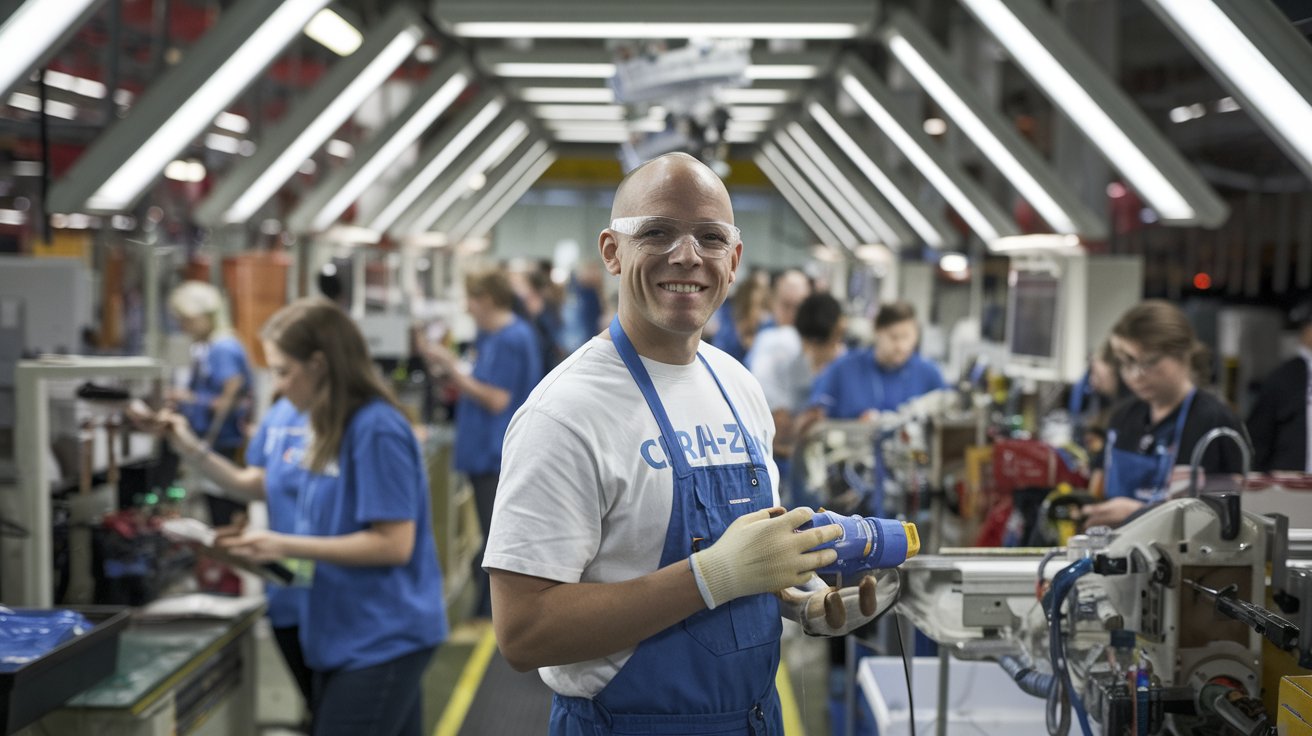Cra-Z-Art Boosts U.S. Manufacturing Amid Tariff Concerns: A 50% Expansion Plan Unveiled
Cra-Z-Art, a leading U.S.-based toy manufacturer, has announced a massive 50% expansion in its domestic manufacturing operations. This strategic move, which includes adding over 500,000 square feet of production space in Tennessee and Florida, comes as the company aims to reduce reliance on imports amid rising tariff concerns on Chinese goods.
Why Cra-Z-Art Is Expanding U.S. Production?
Understanding the Key Drivers Behind This Expansion
The U.S. toy industry has faced growing challenges due to fluctuating tariffs on Chinese imports, leading companies like Cra-Z-Art to rethink their manufacturing strategies. This expansion aims to:
- Reduce reliance on international suppliers: The company seeks to minimize risks associated with trade wars and supply chain disruptions.
- Meet rising consumer demand: American shoppers increasingly prefer U.S.-made products due to quality assurance and faster delivery times.
- Align with major retailers’ demands: Walmart, Amazon, and other large retailers are pushing for stable, tariff-free supply chains.
- Boost domestic job opportunities: This expansion will create hundreds of jobs in Tennessee and Florida.
Key Expansion Highlights
A Breakdown of Cra-Z-Art’s Strategic Expansion
| Aspect | Details |
|---|---|
| Manufacturing Space | +500,000 square feet added in Tennessee and Florida |
| Job Creation | Hundreds of new employment opportunities |
| U.S. Production Increase | From 35% to over 45% of total products |
| Revenue Projection | Expected growth from $200M to $400M in two years |
| Tariff Impact | Reduced reliance on Chinese imports ensures stable pricing |
By increasing domestic production, Cra-Z-Art ensures stability, cost efficiency, and enhanced product availability across the U.S.
Cra-Z-Art’s Market Strategy & Recent Acquisitions
How the Company is Strengthening Its Global Position
Beyond manufacturing, Cra-Z-Art has been expanding its influence through acquisitions and strategic investments:
- Acquisition of Joker AG (Swiss-based toy brand): This move makes Cra-Z-Art the largest producer of multi-compound toy products worldwide.
- Investments in product innovation: Focused on arts & crafts, educational toys, and slime-based toys.
- Strengthening relationships with U.S. retailers: Ensuring consistent product availability and competitive pricing.
Competitiveness in the Toy Industry
Where Does Cra-Z-Art Stand Among Competitors?
Market Comparison Table
| Company | U.S. Manufacturing Presence | Key Strengths |
| Cra-Z-Art | Expanding to 45%+ | Strong retailer partnerships, expanding U.S. production |
| Hasbro | Limited U.S. production | Global branding, licensing power |
| Mattel | Some U.S. operations | Iconic brands like Barbie & Hot Wheels |
Cra-Z-Art’s commitment to increasing U.S. production gives it an edge in reducing tariff risks and meeting consumer demand more efficiently than competitors.
Future Outlook & Industry Impact
What This Expansion Means for the U.S. Toy Market
- Reshaping Manufacturing Trends: Cra-Z-Art’s move could inspire other toy manufacturers to reconsider domestic production.
- Supply Chain Stability: A shift away from heavy dependence on Chinese imports ensures smoother production cycles.
- Potential for Further Growth: If successful, this expansion could lead to more investment in U.S. production facilities.
The U.S. toy industry is shifting toward more sustainable and localized production, and Cra-Z-Art is at the forefront of this transformation.
Conclusion: Cra-Z-Art’s Expansion – A Game-Changer
How This Expansion Strengthens the Company & U.S. Economy
Cra-Z-Art’s 50% expansion in U.S. manufacturing is a pivotal move that positions the company as a leader in the American toy market. With a focus on:
Increased U.S. manufacturing for more reliable supply chains. Better job opportunities in Tennessee and Florida. A stronger market presence through strategic acquisitions and partnerships. Greater stability in pricing by reducing reliance on Chinese imports.
The company’s strategy ensures a future-proof approach to toy manufacturing, aligning with market trends and consumer expectations.





